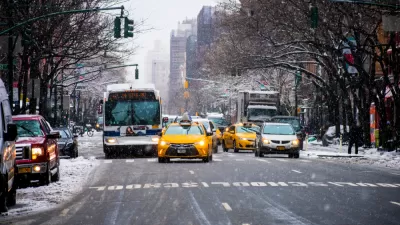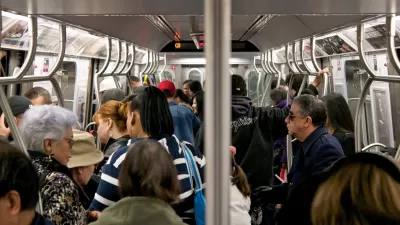There are some very large contingencies still left to resolve (like funding from the federal government) but revenues generated from congestion pricing are allowing for new levels of transit infrastructure spending.

"The Metropolitan Transportation Authority hopes to commit $51 billion over the next five years to the resurrection of the region’s mass transit system," reports Dan Rubinstein.
The newly announced 2020-2024 MTA Capital Program is a game changer, significantly increasing the dollar figure on the agency's current capital investment plan. The money would be spent on improving accessibility to 66 subway stations, resignaling portions of six subway lines, new buses (including 500 all-electric buses), and the second phase of the Second Avenue Subway.
"While the program relies on funding from the congestion pricing scheme set to go into effect in 2021, as well as excess revenue from the MTA’s bridges and tunnels, it — crucially — also relies on nearly $11 billion in funding from the Trump administration, $3 billion from the de Blasio administration, and $3 billion from the state. The governor is on board. It’s not clear where the de Blasio and Trump administrations stand."
More details of the new plan are available in a press release from the New York MTA, published on September 16, 2019, and a New York Times article by Emma G. Fitzsimmons.
FULL STORY: The MTA's resurrection plan: $51B and a subway up to 125th Street

Study: Maui’s Plan to Convert Vacation Rentals to Long-Term Housing Could Cause Nearly $1 Billion Economic Loss
The plan would reduce visitor accommodation by 25,% resulting in 1,900 jobs lost.

North Texas Transit Leaders Tout Benefits of TOD for Growing Region
At a summit focused on transit-oriented development, policymakers discussed how North Texas’ expanded light rail system can serve as a tool for economic growth.

Why Should We Subsidize Public Transportation?
Many public transit agencies face financial stress due to rising costs, declining fare revenue, and declining subsidies. Transit advocates must provide a strong business case for increasing public transit funding.

How to Make US Trains Faster
Changes to boarding platforms and a switch to electric trains could improve U.S. passenger rail service without the added cost of high-speed rail.

Columbia’s Revitalized ‘Loop’ Is a Hub for Local Entrepreneurs
A focus on small businesses is helping a commercial corridor in Columbia, Missouri thrive.

Invasive Insect Threatens Minnesota’s Ash Forests
The Emerald Ash Borer is a rapidly spreading invasive pest threatening Minnesota’s ash trees, and homeowners are encouraged to plant diverse replacement species, avoid moving ash firewood, and monitor for signs of infestation.
Urban Design for Planners 1: Software Tools
This six-course series explores essential urban design concepts using open source software and equips planners with the tools they need to participate fully in the urban design process.
Planning for Universal Design
Learn the tools for implementing Universal Design in planning regulations.
Ascent Environmental
Borough of Carlisle
Institute for Housing and Urban Development Studies (IHS)
City of Grandview
Harvard GSD Executive Education
Toledo-Lucas County Plan Commissions
Salt Lake City
NYU Wagner Graduate School of Public Service





























